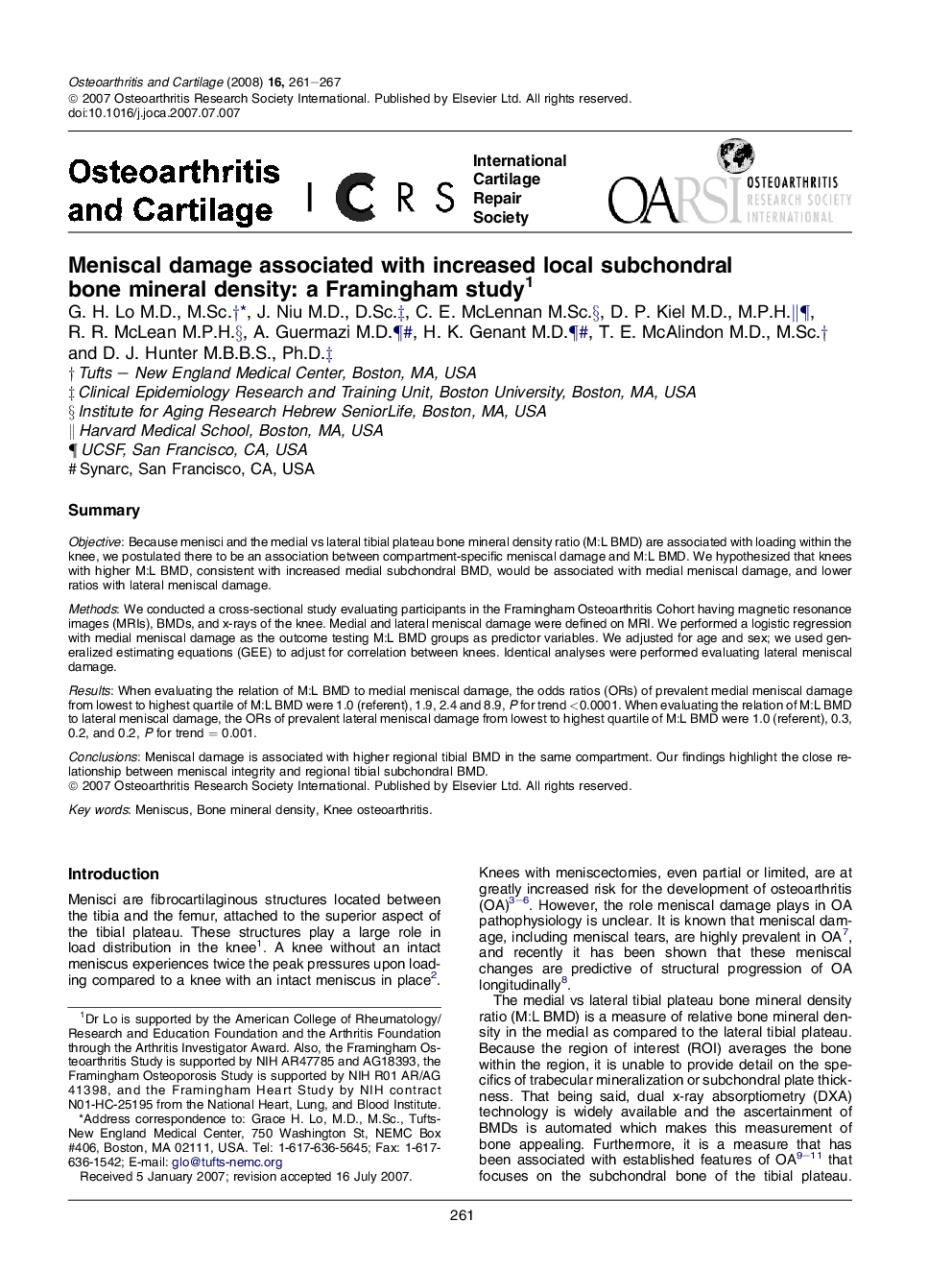| Article ID | Journal | Published Year | Pages | File Type |
|---|---|---|---|---|
| 3381527 | Osteoarthritis and Cartilage | 2008 | 7 Pages |
SummaryObjectiveBecause menisci and the medial vs lateral tibial plateau bone mineral density ratio (M:L BMD) are associated with loading within the knee, we postulated there to be an association between compartment-specific meniscal damage and M:L BMD. We hypothesized that knees with higher M:L BMD, consistent with increased medial subchondral BMD, would be associated with medial meniscal damage, and lower ratios with lateral meniscal damage.MethodsWe conducted a cross-sectional study evaluating participants in the Framingham Osteoarthritis Cohort having magnetic resonance images (MRIs), BMDs, and x-rays of the knee. Medial and lateral meniscal damage were defined on MRI. We performed a logistic regression with medial meniscal damage as the outcome testing M:L BMD groups as predictor variables. We adjusted for age and sex; we used generalized estimating equations (GEE) to adjust for correlation between knees. Identical analyses were performed evaluating lateral meniscal damage.ResultsWhen evaluating the relation of M:L BMD to medial meniscal damage, the odds ratios (ORs) of prevalent medial meniscal damage from lowest to highest quartile of M:L BMD were 1.0 (referent), 1.9, 2.4 and 8.9, P for trend <0.0001. When evaluating the relation of M:L BMD to lateral meniscal damage, the ORs of prevalent lateral meniscal damage from lowest to highest quartile of M:L BMD were 1.0 (referent), 0.3, 0.2, and 0.2, P for trend = 0.001.ConclusionsMeniscal damage is associated with higher regional tibial BMD in the same compartment. Our findings highlight the close relationship between meniscal integrity and regional tibial subchondral BMD.
